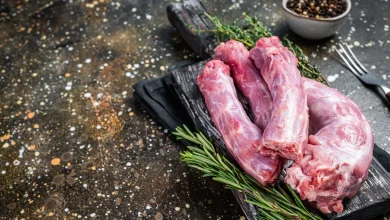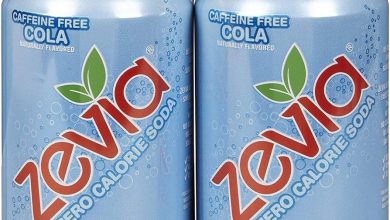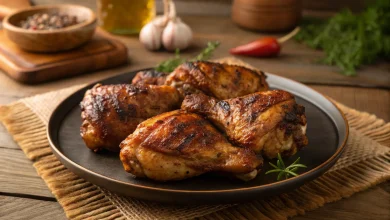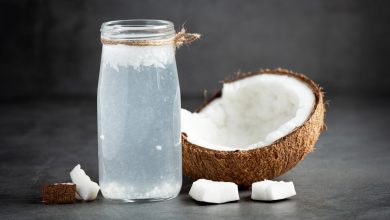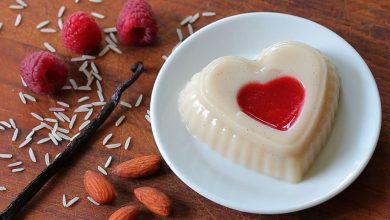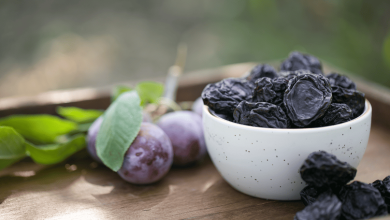Chum Salmon (Cooked, Dry Heat) – Nutritional Information
Chum salmon, a rich and flavorful fish, is a staple in many diets around the world due to its high protein content, heart-healthy fats, and array of essential vitamins and minerals. When prepared using dry heat methods like grilling or baking, this fish offers a deliciously firm texture, perfect for those seeking a nutritious and satisfying meal. Below is a detailed breakdown of the nutritional profile of cooked chum salmon:
Nutritional Information (Per 100g serving)
| Nutrient | Amount |
|---|---|
| Energy | 154 kcal |
| Protein | 25.82 g |
| Total Fat | 4.83 g |
| Saturated Fat | 1.08 g |
| Carbohydrates | 0.0 g |
| Dietary Fiber | 0.0 g |
| Sugars | 0.0 g |
| Calcium | 14 mg |
| Iron | 0.71 mg |
| Magnesium | 28 mg |
| Phosphorus | 363 mg |
| Potassium | 550 mg |
| Sodium | 64 mg |
| Zinc | 0.6 mg |
| Copper | 0.071 mcg |
| Manganese | 0.019 mg |
| Selenium | 46.8 mcg |
| Vitamin C | 0.0 mg |
| Thiamin (Vitamin B1) | 0.092 mg |
| Riboflavin (Vitamin B2) | 0.219 mg |
| Niacin (Vitamin B3) | 8.526 mg |
| Vitamin B6 | 0.462 mg |
| Folate | 5.0 mcg |
| Vitamin B12 | 3.46 mcg |
| Vitamin A | 34.0 mcg |
| Vitamin E | 0.0 mg |
| Vitamin D2 | 0.0 mcg |
Allergen Information
Chum salmon is a fish, and as such, is classified as one of the major food allergens. Individuals with fish allergies should avoid this product. It is also important to ensure that the salmon is sourced from a reputable supplier, particularly for those with sensitivities to contaminants or preservatives that may be present in certain processed fish products.
Dietary Preferences
Chum salmon is an excellent choice for a variety of dietary preferences, including:
- High-Protein Diets: With a generous amount of protein per serving, chum salmon is an ideal choice for individuals looking to increase their protein intake for muscle building or repair.
- Low-Carb & Keto Diets: The fish contains no carbohydrates, making it a perfect addition to low-carb, ketogenic, and other carbohydrate-restricted diets.
- Gluten-Free: Chum salmon is naturally gluten-free, making it suitable for those with celiac disease or gluten intolerance.
- Paleo & Whole30: As a whole, unprocessed food, chum salmon fits well within both the Paleo and Whole30 guidelines, offering a nutritious option that aligns with clean eating principles.
- Heart-Healthy: With a balance of healthy fats, particularly omega-3 fatty acids, this fish supports heart health, making it a valuable addition to heart-healthy and anti-inflammatory diets.
Health Benefits
-
High-Quality Protein: With nearly 26 grams of protein per 100 grams, chum salmon offers a potent dose of high-quality protein, essential for muscle maintenance, growth, and overall body function.
-
Omega-3 Fatty Acids: Like other oily fish, chum salmon is a rich source of omega-3 fatty acids. These essential fats are beneficial for heart health, reducing inflammation, and supporting brain function.
-
Rich in Vitamins and Minerals: Chum salmon is packed with B vitamins, particularly niacin (vitamin B3), riboflavin (vitamin B2), and vitamin B6, all of which play important roles in energy metabolism, nervous system health, and red blood cell formation. Additionally, it provides key minerals like phosphorus, magnesium, and potassium, all of which contribute to bone health, muscle function, and fluid balance.
-
Selenium and Antioxidants: This fish is also a great source of selenium, a mineral with antioxidant properties that help protect the body from oxidative stress and support thyroid function.
-
Low in Mercury: As a smaller fish, chum salmon tends to have lower mercury levels compared to larger fish like tuna, making it a safer choice for frequent consumption.
Preparation Tips
When preparing chum salmon using dry heat methods, consider these tips to maximize flavor and retain its nutritious benefits:
- Grilling or Baking: For a simple yet delicious meal, grill or bake your chum salmon fillet. A drizzle of olive oil, a sprinkle of lemon juice, and fresh herbs such as dill or parsley can enhance its natural flavors without overpowering its delicate taste.
- Seasoning: Keep the seasoning light to highlight the fish’s flavor. Salt, pepper, and a squeeze of fresh citrus work wonderfully. You can also experiment with marinades, such as a mix of soy sauce, honey, garlic, and ginger, for a hint of umami.
- Avoid Overcooking: Since dry heat methods can sometimes result in dry fish, be sure not to overcook your salmon. Aim for an internal temperature of 145°F (63°C) for perfectly flaky and moist results.
- Pairings: Chum salmon pairs beautifully with roasted vegetables, quinoa, or a fresh green salad. You can also serve it with a side of whole grains like brown rice or couscous for a balanced meal.
Conclusion
Chum salmon, when cooked using dry heat methods, is a nutritious and versatile fish that can be easily incorporated into a variety of dietary plans. Its high protein content, rich omega-3 fatty acids, and impressive array of vitamins and minerals make it an excellent choice for anyone looking to boost their nutritional intake. Whether you’re preparing a quick weeknight dinner or planning a special meal, this fish provides an easy and healthy option that is both satisfying and full of flavor.



